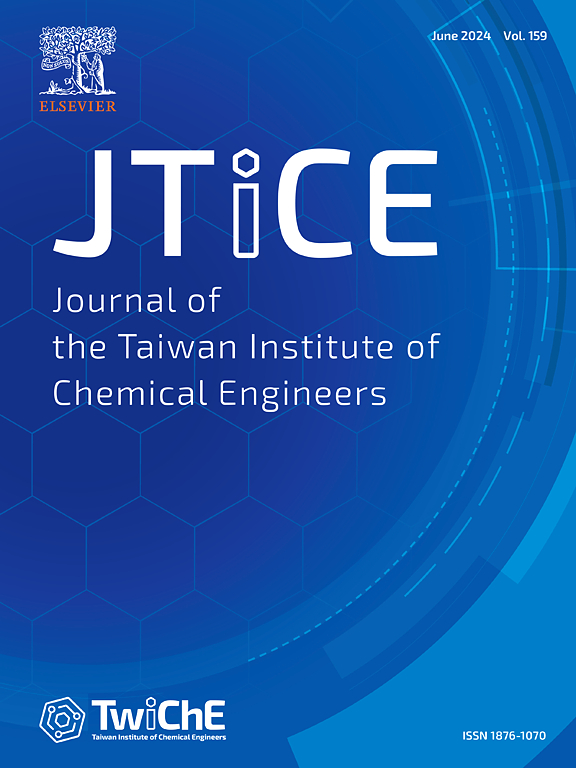Numerical analysis of melting heat transfer for radiative and dissipative flow of hybrid nanofluid with entropy optimization
IF 5.5
3区 工程技术
Q1 ENGINEERING, CHEMICAL
Journal of the Taiwan Institute of Chemical Engineers
Pub Date : 2025-07-14
DOI:10.1016/j.jtice.2025.106271
引用次数: 0
Abstract
Background
This paper investigates the involvement of nanoparticle morphologies on heat transmission and fluid motion through melting heat surfaces, focusing on the optimization of heat transfer in stagnation point flows by examining the interplay between non-linear thermal radiation and melting points.
Methods
Two nanoparticles, Fe3O4 and MgO, in spherical, cylindrical, and laminar shapes within H2O base fluids are studied for their relevance to heating and cooling industries, such as petrochemicals, nuclear reactors, and liquid chromatography. The study addresses melting heat conditions, partial velocity slip, and the role of the melting effect on heat transport properties, while also considering the magnetic influence on hybrid nanofluids with varying densities using the Roseland approximation.
Significant findings
Through similarity transformations, partial differential equations are simplified into ordinary differential equations, and the Akbari-Ganji approach validates numerical results, revealing the interactions of momentum, energy, and concentration. The findings show that laminar-shaped MgO − Fe3O4/H2O significantly enhances the temperature profile Θ(ξ) with increasing concentrations φ1,φ2, due to superior thermal conductivity, which also raises the velocity profile. The hybrid nanofluid outperforms others, with higher Brinkman numbers and radiation reducing system irreversibility, and resulting in minimal entropy production compared to single nanofluids.

基于熵优化的混合纳米流体辐射与耗散流动熔融换热数值分析
本文研究了纳米颗粒形态对熔体热表面传热和流体运动的影响,通过研究非线性热辐射与熔点之间的相互作用,重点研究了驻点流动中的传热优化。方法研究了两种纳米颗粒(Fe3O4和MgO)在水基流体中的球形、圆柱形和层流形状,以研究它们在加热和冷却行业(如石油化工、核反应堆和液相色谱)中的应用。该研究解决了熔化热条件、部分速度滑移以及熔化效应对热传输特性的作用,同时还使用Roseland近似考虑了磁性对不同密度混合纳米流体的影响。通过相似变换,偏微分方程被简化为常微分方程,Akbari-Ganji方法验证了数值结果,揭示了动量、能量和浓度的相互作用。结果表明:随着浓度φ1、φ2的增加,层状MgO−Fe3O4/H2O的导热性能显著提高了温度分布Θ(ξ),速度分布也随之提高。混合纳米流体优于其他纳米流体,具有更高的布林克曼数和降低系统不可逆性的辐射,并且与单一纳米流体相比,产生的熵最小。
本文章由计算机程序翻译,如有差异,请以英文原文为准。
求助全文
约1分钟内获得全文
求助全文
来源期刊
CiteScore
9.10
自引率
14.00%
发文量
362
审稿时长
35 days
期刊介绍:
Journal of the Taiwan Institute of Chemical Engineers (formerly known as Journal of the Chinese Institute of Chemical Engineers) publishes original works, from fundamental principles to practical applications, in the broad field of chemical engineering with special focus on three aspects: Chemical and Biomolecular Science and Technology, Energy and Environmental Science and Technology, and Materials Science and Technology. Authors should choose for their manuscript an appropriate aspect section and a few related classifications when submitting to the journal online.

 求助内容:
求助内容: 应助结果提醒方式:
应助结果提醒方式:


